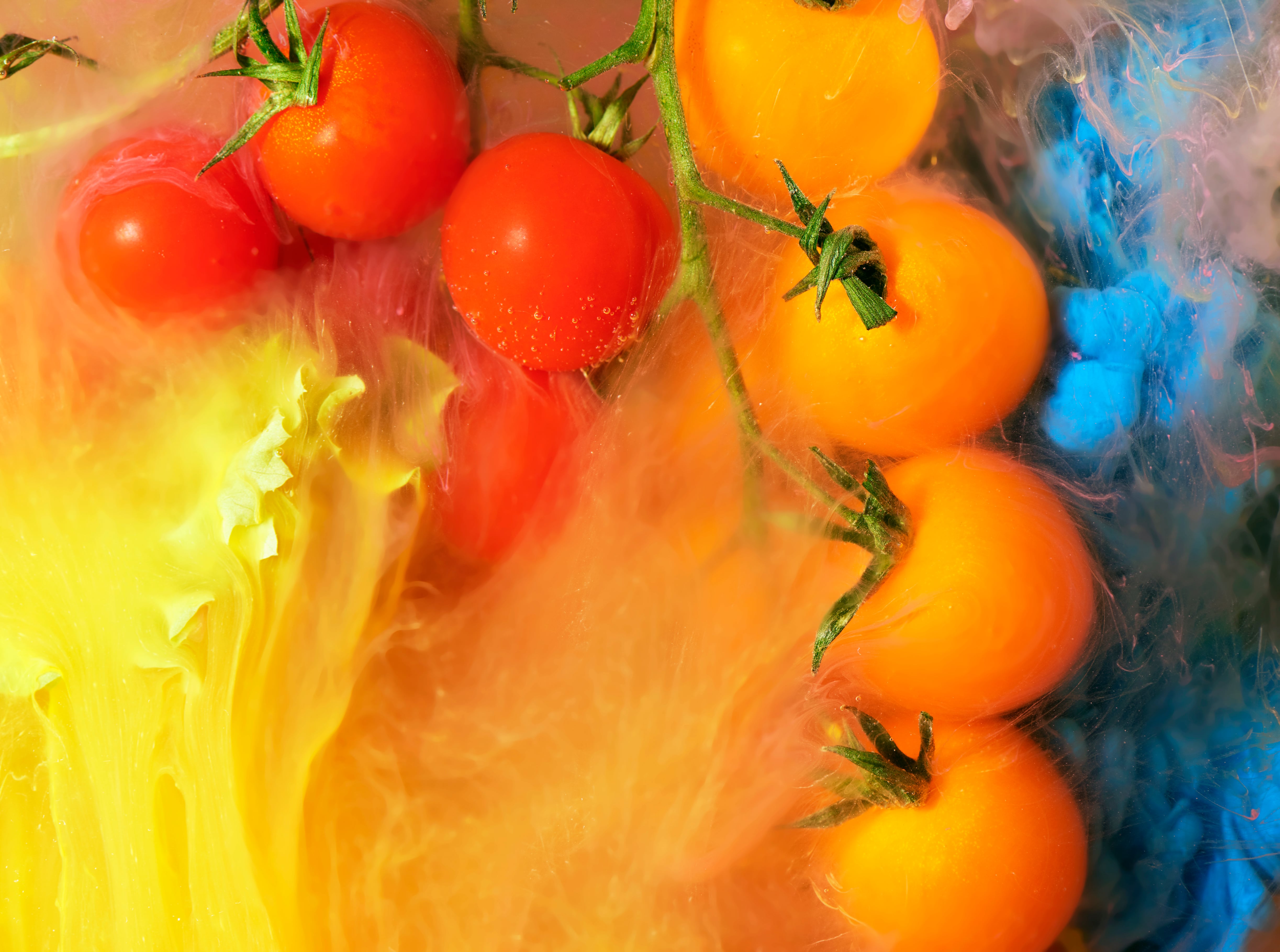Colours in food are not just for decoration. They play an important role and can even evoke particular tastes, moods and sometimes memories.
Furthermore, research has shown they are a fundamental part of how we experience food – that without them, food would literally taste different to us.
It’s important for manufacturers to know what colours consumers currently desire and why.
Red, yellow, brown: Authenticity
In a fast-moving world, consumers want to grab onto the familiar and the safe. They want things that remind them of simplicity and authenticity.
Much like the recent rise in consumer demand for nostalgic flavours, when it comes to colours consumers are looking for things that evoke comfort.
They are seeking qualities that are familiar, simple, and comforting, and “don’t take too much brain power,” suggests Kelly Newsome, senior global marketing manager for colours and savoury flavours at ADM.
According to ADM, the colours that evoke this the most come from a range of reds: from the classic “Hawaiian punch red” to more “earthy, burgundy kind of reds”, and much in between.
This trend, she explains, draws on “social or cultural memories that are ingrained in us,” such as sitting around a fire, with the red of the flames and the red of cooking meat evoking similar feelings.
“Red is so innate and comforting to us as human beings.”
Red is aligned with flavours like berry, for example strawberry, as well as umami and creamy flavours and sweet brown profiles, according to ADM.
Specifically, the trend will be seen in the non-alcoholic beverage category, with beverages such as sports and energy drinks, soft drinks, mocktails and flavoured waters. In food, it is likely to appear in sweet goods, such as confectionary and baked products.
Colour producer Oterra also suggests that consumers want authenticity, and colours that evoke this.
According to Oterra, not only red but yellow, for excitement and energy, and brown, for a reduction in stress and anxiety, also evoke similar feelings.
Blue, purple, magenta: Innovation and boldness
We saw in the flavour trends that consumers are looking for bold and interesting flavour combinations.
This is also evoked by colours, particularly blues, explained Newsome. From light blue to dark, moody, navy midnight blue, the blue colour palette evokes boldness and experimentation in food, particularly in the context of personalisation.
“There’s an increasing desire to have a little bit of fun,” explained Newsome.
Oterra, too, believes that consumers are inspired by experimentation. For example, purple and magenta, according to Oterra, evoke mystery, while green is ‘revolutionary.’
Yellow, orange, green: Mental and physical wellness
Consumers are increasingly focusing on both mental and physical wellbeing, prompting colour trends to reflect this. Earthy greens, from ‘super pale to deeper and darker greens’, align with this trend, as well as other colours such as lavenders.
With consumers focusing on mental wellbeing, explains ADM’s Newsome, colours that evoke wellness, particularly in the arena of emotional wellbeing, are at the fore.
This aligns with consumers ‘seeking wellness more holistically’ through positive emotions, explains Newsome.
The flavour profiles most likely to align with these greens are hops, grapefruit, tropicals, botanicals and bergamot. This will be found particularly in beverage, Newsome predicts.
Physical wellbeing, too, is reflected in colour. The trend in the use of technology to make food more nutritionally efficient, either for those using GLP-1 drugs or those under cost-of-living pressures, is particularly strong.
Oranges and yellows align with this trend, explains Newsome. Ready meals, cheese and dairy sauces, soups and seasonings, and orange, citrus and honey in the sweet foods and beverages space, are the sorts of products you might see these colours in.
Grey and rainbow in desserts
Desserts are the best way to understand what colours consumers like, explains Lee Brymer, marketing communications manager at Tastewise, which uses AI to explore consumer trends across social media.
Colour in savoury foods is often largely linked to taste preferences, explains Brymer.
There is a differentiation “between the importance of a colour and the importance of an ingredient that contains a colour.” People aren’t interested in the red in a meal containing red chillis - they’re interested in the spicy taste of the chilli.
In desserts, however, people are more attracted to colours themselves, particularly in ice-cream and frosting. Both of these things are “very visually appealing and mouth-watering,” he says, giving colour a more prominent place within them. Furthermore, people are more open to unconventional colours in this context than in savoury foods.
In desserts, in contrast with savoury foods, what draws consumers in “is always going to be attractive rather than tasty,” Brymer explains.
As seen already, “people are looking for colours that make them feel good… they’re looking for things that make them happy and make them calm.”
In ice cream and frosting, the two colours that were trending the most significantly were ‘rainbow’ and ‘grey.’
‘Grey,’ or ‘metallic,’ is seen the most in the context of disco-themed foods, like disco cake.
‘Rainbow,’ the popularity of which is still growing, is popular both with consumers themselves and brands, who are incorporating the colour into their NPD. Brands such as Dr. Oetker are incorporating rainbow into their products, says Brymer.


